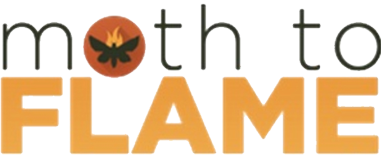
01 Jun Shreveport and Two Roads: Getting things Ready
The days leading up to the 1st day of filming

The beauty of indie filmmaking is that nothing is ever set in stone. The possibilities are endless. The curse of indie filmmaking is also that nothing is set in stone. So many factors are often beyond your control and you have to learn to be extremely flexible in order to succeed or at least to stay sane.
Though the general rule is that the more pre-planning you do, the less surprises you will encounter, this is not always the case for filmmaking. It seems that regardless of how much you pre-plan, surprises will always happen. The more time spent in pre-production does however help better prepare you with how to deal with these surprises.
Most productions will have problems, but what makes low-budget indie filmmaking different is the lack of funding to throw at these problems. Though this is for the most part not a positive situation, I find that it is during times of duress when some of the best filmmaking occurs. Not having the luxury to throw money at problems allows you to creatively think your way out of problems, which more often than not leads you to a unique film filled with character. You leave with many good and bad stories to tell and a lot of lifelong learning experiences. And so it begins… the tale of our short film, “Two Roads.”
2nd Time Filming in Shreveport
Adam and I started pre-production about two months prior to production. Having shot “A Bird’s Nest,” our first short film together in Shreveport the year prior, we had learned from our previous experiences. Besides reinforcement that having a solid storyboard, strong cast, and a hardworking crew would be the key to a successful film, we also learned that Shreveport in May is a magnet for rain. We arrived prepared this time to shoot in wet weather. Our script involved a lot of animals as well as a very young lead actress, both factors considered amongst the top 3 things that filmmakers avoid, which lead us to allot an extra day and a half of production time.
Things We Did Before The Crew Arrived
Adam and I arrived three days before the cast in order to buy last minute props and supplies. After stuffing our car to the brim with equipment, there wasn’t room for much more. We had to get an Arri light fixed and found a local grip house and made friends with Jordan, a former electrician and sole employee at this gigantic grip house. We ran to Wal-Mart multiple times for expendables and food like Red Bull, alcohol, batteries, and more. We even made trips to a crawfish joint (oh wait, that was just for fun).
Between buying stuff, we also made time to scope out and block on location. Previously, we had based our storyboards off of iphone pictures taken by Adam when he happened to pass through Shreveport on the way to an audition in NOLA. Adam and I typically like to recreate our drawn storyboards in photo form on location prior to shooting because it allows us to visualize whether certain shots that worked in our head would work on screen.
3. Formulate solutions for the rain

While we ran various errands, our minds were constantly on the fact that the weather forecast predicted it would rain every single day of production. Though we have dealt with rain, forecasts showed thunderstorms and flash flood warnings. This would make shooting impossible, but all we could was hope for the best. We brainstormed how we could utilize the weather to our advantage. We made notes as to which parts of the script would benefit from rain and which parts would absolutely make no sense with rain.
4. Made friends with the animals

When we shot “A Bird’s Nest,” the year prior, the most memorable talent that we encountered was a crooked jaw longhorn named Lobo. I knew without a doubt, he would be a lead in our next film. Though I was aware that Lobo worked with handicapped children and was extremely tame, I also knew that neither Adam nor I had worked with any animals larger than a dog before. Adam and I had written so many scenes based on the theory and hope that Lobo would cooperate, but we really had no guarantees. When we arrived at the farm, we made sure to get ourselves familiar and comfortable with Lobo. If directing doesn’t work out, I know I definitely have a future in animal wrangling/whispering.
5. Check-in/Revise Call Sheets

Finally, in order to film, all the necessary paperwork had to be ready. We spent every day revising and updating the call sheets, getting our contracts in line, and printing.
The crew arrived around 5 pm on May 13th on location. Upon arrival, their first initiation was to catch our first prop, a fish. Though Alex had several bites on his fishing line and Adam felt he would be the first crew member to catch something, it was Jason Cates who made the first and only catch of the day before it started raining.
The crew pow wowed briefly before heading back to the Duncan residence to eat Adam’s mom, Penny’s Southern cooking. We may run the toughest sets, but we know all is well if there is good food for all.
Kellie, Adam, and I returned back to the set around 10 PM (which takes 45 minutes to get to from home base), to finish set decorating and organizing. By the time we finished, it was already midnight. By the time Adam and I finished going over the plan for the next day, it was already 2 AM. I knew there would many sleepless nights ahead of us.




Sorry, the comment form is closed at this time.